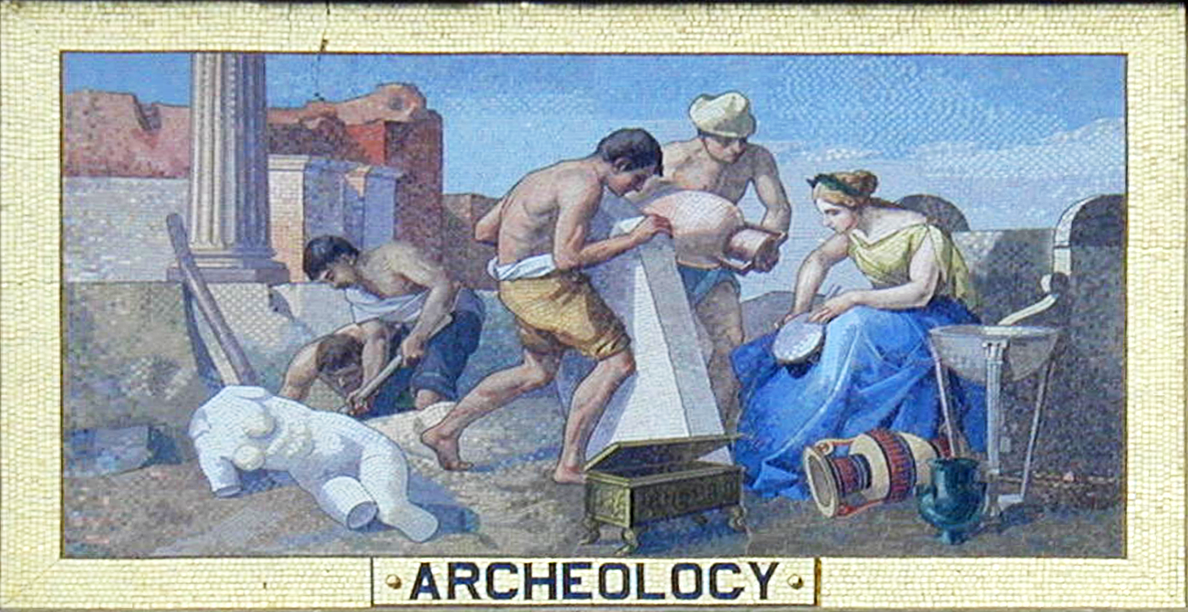
Though the concept of organized labor may seem distinctively modern, what we today might call a workers’ strike has precedent in the early Roman Republic according to historian Sarah Bond in her insightful new history of the Roman world through labor unions, Strike: Labor, Unions, and Resistance in the Roman Empire.
During the early years of the Republic, as the city on the Tiber was regularly at war, soldiers were in constant demand. The Roman elite—the patricians—while happy to take on leadership roles, were not interested in grunt work. And so, farmers and tradesmen—the plebeians—were repeatedly drafted. Understandably upset at such persistent and costly interruptions to their lives, the plebeians resorted to the only leverage they had for greater political involvement and respite from relentless military service: They seceded, quitting Rome until basic demands were met.
We think of labor unions as something modern and, most often, unpleasant. Workers’ strikes pose an undeniable inconvenience to the general public—just ask anyone who has tried traveling through, say, Greece or the UK or France during a rail workers’ strike. Meanwhile in the U.S., too many professions in some locations offer inadequate pay and health benefits, leading teachers and graduate students to unionize for better pay. As conservative Catholic journalist Sohrab Ahmari argues in his book Tyranny, Inc., many strikes today are the fruit of inequitable conditions for workers. What should people do when they perceive no other recourse for finding justice in the workplace?
The issue is one of human dignity, Ahmari argues. It is, furthermore, profoundly biblical: “Behold, the wages you withheld cry out… The Catechism of the Catholic Church cites that verse from James, as well as Leviticus and Deuteronomy, in identifying unjust wages as one of the sins that cry out to heaven for divine vengeance.”
Ahmari’s concern is with the lack of interest among today’s Christians for the dignity of workers. Indeed, he has remarked that his book confused many fellow conservatives—isn’t supporting worker unions a bit too… Communist? But as Bond shows in her book, which pairs remarkably well with Ahmari’s, this situation—the seemingly inevitable pitting of workers against elites—is timeless. So is the opposition of private employers or state officials to workers’ demands. Or, at least, this is a central feature of Roman history in both the Republic and Empire.
Of course, the biblical James, whom Ahmari quotes repeatedly, lived and wrote in the Roman Empire too, witnessing plenty of exploitative labor. Bond’s narrative confirms with specifics. Arrests, beatings, and worse treatment of workers whose collective efforts were not welcome to local governors and other agents of the Empire were perfectly ordinary.
Just consider the correspondence of Pliny, governor of Bithynia in 111-113 AD, with the Emperor Trajan, whose opinion the paranoid governor sought on every issue in the province—no matter how minor. One could read this correspondence as one example of suspicious association-busting after another. Pliny’s most famous letter exchange from his governorship involves his shocked discovery of Christians in his province—while not a professional union, still one that involve unauthorized gathering. In another letter, he is trying to figure out whether he could organize fire brigades in a large city. The emperor disapproves, noting that any large group gatherings could swiftly turn political, devolving into plots against the empire. He may have had a point there. In one extreme case Bond documents, the silversmiths’ association of Constantinople formed a plot to assassinate the Emperor Justinian in AD 562 (they failed).
Still, lest you think the Romans were excessively harsh to workers—or that Roman workers were excessively prone to strike when mistreated—Bond includes relevant examples from other ancient civilizations. A particularly striking (no pun intended) example is her discussion of a strike that occurred in New Kingdom Egypt (ca. 1157 or 1155 BC): “the artisans and laborers in the workmen’s village of Deir el-Medina laid down their tools and went on strike due to a lack of rations, late pay, and bad working conditions… Hunger and bad pay, as it turns out, were powerful motivators for withholding labor.”
And yet, the story Bond tells in this book involves more than just unhappy workers banding together for better conditions or pay—and how such collaboration has persisted to this day. It is also a story about the essential yet often invisible connective tissue of human societies. Workers’ associations “provided ancient peoples with important group identities in the face of a vast empire, extended insurance to those living in a world with few welfare programs or safety nets, allowed risk mitigation within precarious ancient economic networks, and offered a host of other benefits that could be social, religious, and economic.” More than that, it has never been good for people to be alone, and bonding with those employed in the same field leads to social and economic benefits that members of these associations would never otherwise access.
Indeed, in reading Bond’s book, I was thinking about what the evidence of well-documented explosive events like strikes leaves out. The vast majority of time, after all, associations of workers did not plan strikes. Rather, they gathered for dinners to celebrate life’s events, catch up with each other, and to plan members’ funerals. In our age of isolation, when the Surgeon General has declared an epidemic of loneliness as a serious danger to public health, this is an important reminder. It is not only workers in difficult circumstances who need professional associations of some sort. We all need people, close community, dear friendships—those who will recognize us as made in the image of God in crisis situations as well as help us face the mundane difficulties of life under the sun.